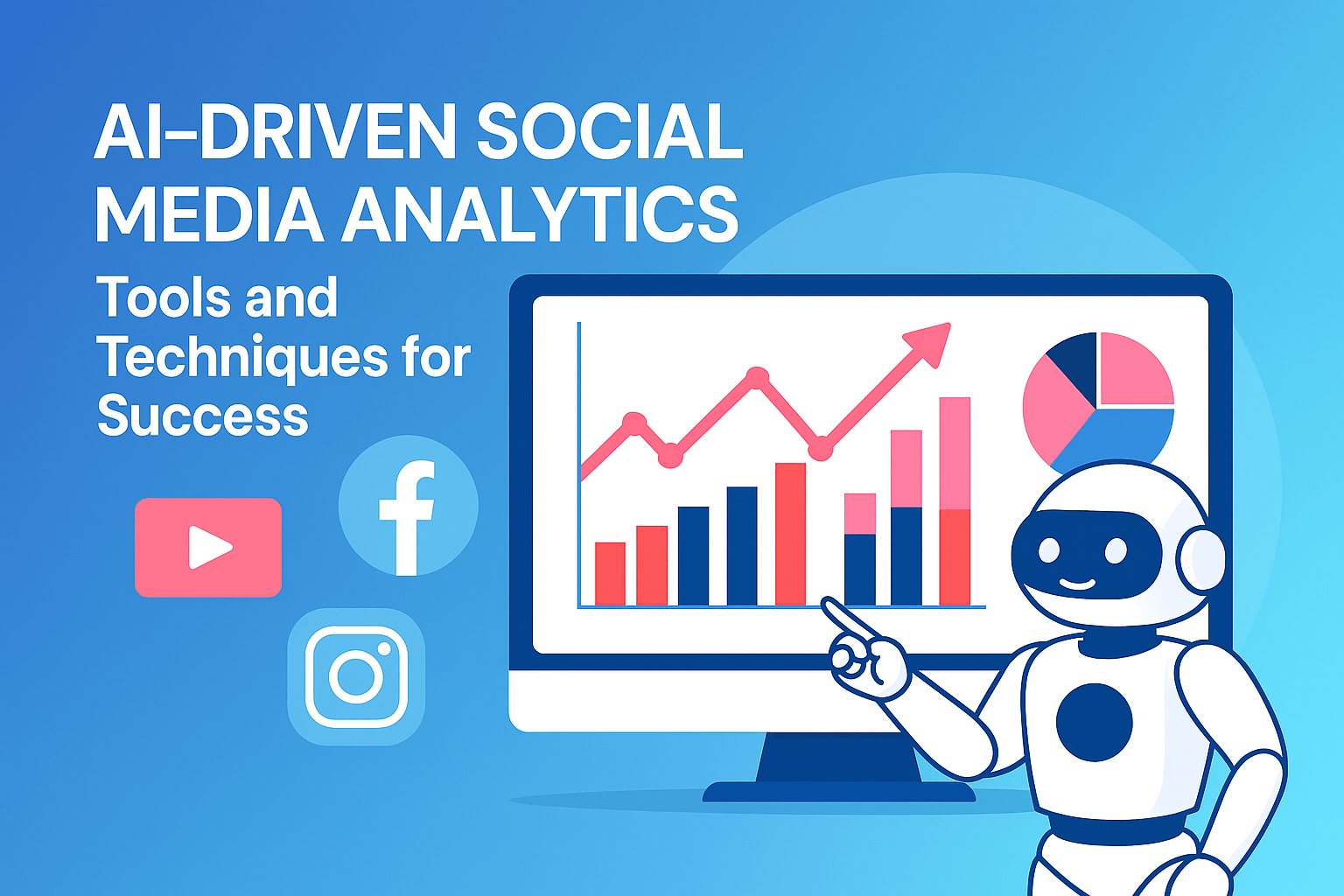AI-Driven Social Media Analytics: Tools and Techniques for Success

Social networks are no longer just platforms for sharing content—they are real-time sources of consumer intelligence. Understanding audience behavior requires more than manual number-crunching. That’s why AI-Driven Social Media Analytics has become essential in 2025.
Through artificial intelligence and machine learning, marketers can track conversations, predict trends, and measure engagement with remarkable accuracy.
What It Means
The term AI-Driven Social Media Analytics describes using artificial intelligence to examine interactions, comments, and engagement data from various platforms.
AI recognizes language patterns, emotional tone, and visual cues, turning raw information into actionable insights for smarter marketing decisions.
Why AI Matters in Modern Analytics
AI makes it possible to process massive amounts of unstructured social data instantly. Key advantages include:
-
Real-time insights: Detect viral trends before competitors.
-
Predictive analysis: Forecast engagement and audience growth.
-
Personalization: Deliver content tailored to individual preferences.
-
Efficiency: Automate reporting and performance tracking.
These benefits allow brands to focus more on strategy and creativity rather than repetitive data tasks.
Top Tools Using AI for Social Insights
-
Sprout Social – Combines sentiment tracking with automated reporting.
-
Brandwatch – Uses deep learning for consumer intelligence.
-
Talkwalker – Excels in visual recognition and multilingual analysis.
-
Hootsuite Insights – Monitors conversations across multiple networks in real time.
-
Sprinklr – Offers unified dashboards for campaign management.
Each platform integrates machine learning, NLP, and automation to turn data into marketing direction.
Effective Techniques for AI-Based Analysis
To make the most of advanced analytics tools:
-
Define clear goals – Focus on metrics that align with business objectives.
-
Use emotion analysis – Understand how audiences feel about your brand.
-
Automate alerts – React quickly to negative mentions or emerging topics.
-
Integrate cross-channel data – Combine results from all major networks.
-
Refine with feedback loops – Continuously improve campaigns using AI suggestions.
Content Optimization with AI Insights
AI reveals what truly resonates with followers. By studying post performance, timing, and tone, it helps marketers:
-
Identify trending subjects and relevant hashtags.
-
Schedule posts for maximum reach.
-
Segment audiences for personalized communication.
-
Measure ROI by connecting engagement to conversions.
These techniques ensure consistent growth and stronger brand loyalty.
Influencer and Sentiment Intelligence
Influencer partnerships succeed when chosen through data, not guesswork.
AI evaluates authenticity, engagement quality, and audience relevance, helping brands find ideal collaborators.
It also gauges overall sentiment—positive, neutral, or negative—so companies can protect reputation and respond strategically.
Challenges to Consider
-
Data privacy: Stay compliant with global laws such as GDPR.
-
Algorithmic bias: Regularly retrain models to avoid skewed insights.
-
Human oversight: Balance automation with human judgment for context and empathy.
The Future of AI Social Tools
Expect deeper integration of generative AI, voice recognition, and real-time predictive dashboards.
As automation improves, marketers will manage campaigns dynamically—adjusting creative and budgets instantly based on AI feedback.
Conclusion
In today’s fast-moving digital landscape, AI-Driven Social Media Analytics gives brands the intelligence to act quickly and effectively.
By embracing smart tools, predictive techniques, and data-driven creativity, marketers can turn every post into measurable success.
